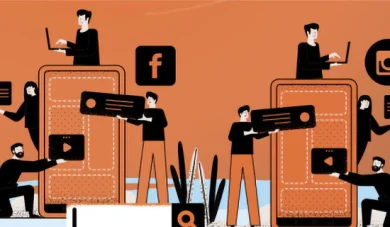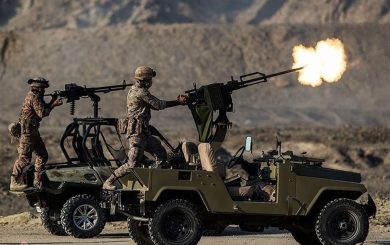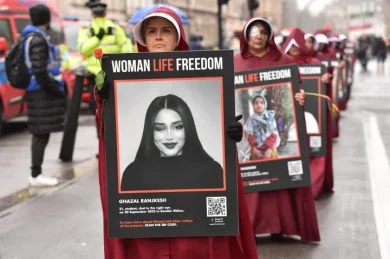In the age of surveillance and censorship, where authoritarian regimes try to tighten their grip over truth and free expression, Iranian women have become digital warriors. Armed not with weapons, but with smartphones, encrypted apps, hashtags, and courage, they are using technology to defy the regime, expose abuses, and rally international support. As the Islamic Revolutionary Guard Corps (IRGC) attempts to silence voices through repression and control, women across Iran are reclaiming their space online, building a digital resistance that is shaking the foundations of the regime.
This article explores how Iranian women—despite facing digital surveillance, internet shutdowns, and threats—are using technology to organize protests, document abuse, spread their message globally, and challenge the regime’s grip on information.
1. The Rise of a Digital Revolution
A. From Silence to Hashtags
The tragic death of Mahsa Amini in September 2022 sparked one of the largest waves of unrest in Iran in decades. What made this movement different was the immediate global visibility it gained. Iranian women, particularly young Gen Z activists, took to social media with powerful hashtags like:
• #MahsaAmini
• #WomenLifeFreedom
• #IranProtests
• #FreeIran
These weren’t just trending topics—they became tools of resistance. Within hours, the world knew her name, her story, and the faces of the young women risking their lives to demand freedom.
B. Smartphones as Weapons of Truth
While the IRGC controls state media, Iranian women have turned their phones into broadcast studios, filming protests, arrests, and human rights violations in real time. In the face of government lies, these clips provide raw, undeniable evidence of the regime’s brutality.
2. IRGC’s Digital Crackdown: Censorship, Surveillance, and Fear
The regime—particularly the IRGC—has responded to this wave of digital activism with cyber repression. Their tactics include:
A. Internet Shutdowns
During major protests, especially in Kurdistan, Tehran, and Sistan-Baluchistan, the government cuts off mobile internet access or slows it down to prevent communication and content-sharing.
B. Surveillance and Cyber-Tracking
The IRGC runs a sophisticated cyber unit that:
• Hacks activists’ accounts
• Monitors encrypted apps
• Uses spyware to track locations and communications
• Targets family members to intimidate outspoken women
Despite this, activists find new ways to adapt, moving between platforms and using encryption tools to protect their identities.
3. How Iranian Women Fight Back Digitally
A. Encryption and Anonymity
Women increasingly rely on:
• VPNs to bypass censorship
• Encrypted messaging apps like Signal and Telegram
• Anonymous posting via burner accounts to evade tracking
Online safety training—often shared peer-to-peer—is helping women stay one step ahead of the IRGC’s surveillance.
B. Storytelling as Resistance
Platforms like Instagram, Twitter (X), YouTube, and Clubhouse have become storytelling spaces. Iranian women use them to:
• Share personal experiences of detention, abuse, and resistance
• Call for global support and solidarity
• Raise awareness about missing, arrested, or killed protesters
These stories become part of a collective memory, ensuring the regime cannot erase its crimes.
4. Case Studies: Women Leading Digital Resistance
A. Masih Alinejad: Journalism and Social Media Power
Living in exile, Masih Alinejad has become a global voice for Iranian women, using Instagram, X, and Telegram to:
• Encourage women to remove their hijabs via #MyStealthyFreedom
• Share footage of IRGC brutality
• Connect diaspora activism with voices inside Iran
The regime even plotted her kidnapping, underscoring the power of her digital influence.
B. Niloofar Hamedi and Elaheh Mohammadi
These two women journalists were among the first to report on Mahsa Amini’s arrest and death.
Their online reporting mobilized global awareness. Both were arrested, charged with “propaganda,” and imprisoned—but their impact remains.
C. Sepideh Gholian: Tweets from Behind Bars
After enduring torture, Sepideh Gholian fearlessly used social media upon her brief release to chant anti-regime slogans. Her bold posts reignited support and highlighted that digital resistance doesn’t stop with imprisonment.
5. The Role of the Diaspora in Amplifying Digital Voices
Iranian women living abroad play a vital role in:
• Sharing translated posts and videos
• Running advocacy accounts on social media
• Organizing digital protests and Twitter storms
• Educating global audiences on Iranian women’s struggles
Their work ensures that Iranian voices aren’t isolated and that the digital resistance stays global.
6. Technology as a Tool for Organization
A. Digital Protest Planning
Through group chats, anonymous channels, and even gaming platforms, women:
• Coordinate protest locations
• Share safety tips
• Create real-time protest maps
These efforts are especially critical during crackdowns and curfews.
B. Art, Memes, and Music
Iranian women use digital creativity as protest:
• Animated videos to explain their rights
• Protest songs that go viral
• Memes that mock the regime and rally support
Art online becomes both resistance and relief.
7. Challenges and Risks
A. Arrests and Forced Confessions
The regime targets women who post online, especially those with large followings. Many face:
• Long prison sentences
• Beatings and sexual violence
• Public “confessions” aired on state TV
B. Cyber Harassment and Disinformation
Pro-regime trolls often:
• Threaten activists online
• Spread fake news to discredit protestors
• Impersonate activists to confuse followers
Despite this, women persist.
8. Global Solidarity and the Role of Tech Companies
A. What the World Can Do
1. Support open internet efforts like Starlink to bypass regime blocks
2. Pressure social media platforms to protect Iranian users and remove regime propaganda
3. Fund digital security training for Iranian activists
4. Recognize and celebrate digital courage—nominate activists for global awards, give them platforms
B. What Tech Companies Should Do
• Ensure algorithm fairness so Iranian posts aren’t hidden
• Prevent account suspensions due to mass-reporting by regime bots
• Provide dedicated support for at-risk Iranian users
Conclusion: Defiance That Can’t Be Deleted
In the face of violence, censorship, and constant fear, Iranian women have turned technology into a weapon of hope. From hashtags that spark global outrage to videos that expose brutality, their digital resistance is not just a trend—it’s a movement.
The IRGC may control prisons, guns, and the media, but it cannot fully control the internet, creativity, or the will to be free. As long as Iranian women have access to even a single screen, they will continue to speak truth, organize resistance, and inspire the world.
Join Our Newsletter!
Stay informed with the latest updates, news, and ways to take action in the fight for justice and global security. Sign up now to get updates delivered straight to your inbox!





